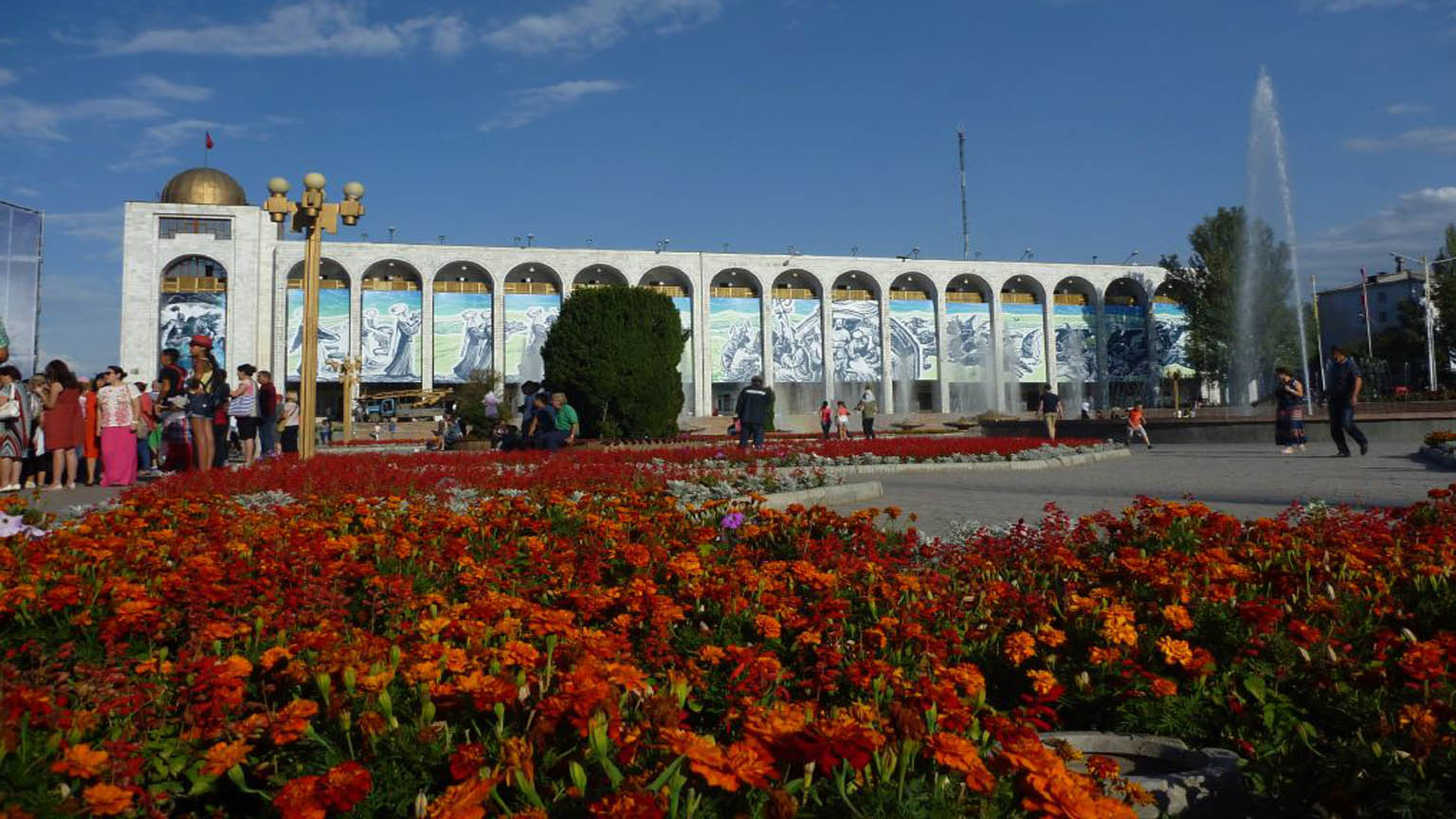


Beautiful green city with a number of parks, monuments from the Soviet era and a combination of old houses and Soviet buildings. Many exciting sights can be found outside of Bishkek, including ruins of ancient cities and beautiful valleys of Kyrgyz Ala-Too.
The capital, Bishkek, is located in the Chui Valley in the north of the country. It was founded in 1878 and was originally called Pishpek, this is the name of the wooden paddle that the Kyrgyz people use to make their kymyz (kymyz - fermented mare's milk), the national drink. Later, during the Soviet Union, it was named Frunze after the famous Russian general Mikhail Frunze. At the time of independence in 1991, it was renamed Bishkek.
The city was influenced by the Russians from the beginning and actually more or less built by them. Most of the buildings you see today are built in a typical Soviet architectural style, and the trees in the parks, boulevards and alleys are irrigated by a system of canals built by Russians. These boulevards and parks make this city a pleasant city as they provide total shade in the summer when temperatures can reach up to 40 degrees Celsius and the open canal system also helps to keep the summer bearable. As a result of this planning, Bishkek is considered to be one of the greenest cities in Central Asia.
Bishkek cannot claim to be one of the big cities in the world like London, Paris or New York. However, it is the capital of Kyrgyzstan and has a number of important and interesting buildings, monuments, parks, museums, galleries, theaters and other places to see or visit.
Ala Archa National Park
The Ala Archa National Park is an alpine national park in the Tian Shan Mountains in Kyrgyzstan, which was founded in 1979 and is located about 40 km south of the capital Bishkek. The park, which includes the gorge of the Ala Archa River and the surrounding mountains, is a popular destination for weekend hikers, horse trekkers, skiers and mountaineers looking for challenging ice, rock and mixed routes. The park is open all year round, although the most popular seasons are late summer and early fall.
In Kyrgyzstan, the archa, which gives the park its name, is a juniper that is traditionally particularly valued by the Kyrgyz people and uses the smoke from its burning branches to chase away evil spirits. However, the archa should not be planted near the house, as it gradually drains energy from people who live nearby.
The park covers about 200 square kilometers and its height ranges from about 1,500 meters at the entrance to a maximum of 4,895 meters at Peak Semenov Tian-Shanski, the highest peak in the Kyrgyz Ala Too Mountains of Tian Shan. There are more than 20 small and large glaciers and about 50 mountain peaks in the park. Two small rivers, Adygene and Ak-Sai, stem from the meltwater from these glaciers. The Adygene Gorge is a beautifully forested valley with waterfalls, springs and trout abundant. A small reservoir on the Kargay Bulak River was built to study the Amu Darya trout. Other wild animals include